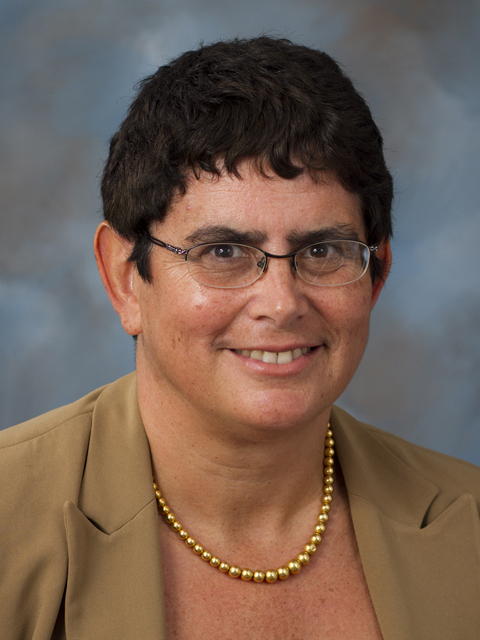Valérie de Crécy-Lagard, Ph.D.
Associate Professor of Microbiology and Cell Sciences
Institute of Food and Agricultural Sciences
2014 Awardee
 Valérie de Crécy-Lagard is a pioneer in the field of comparative genomics, a field of biological research in which the genomic features of different organisms are compared.
Valérie de Crécy-Lagard is a pioneer in the field of comparative genomics, a field of biological research in which the genomic features of different organisms are compared. de Crécy-Lagard has performed research in the following areas: tRNA modification metabolism and function; metal metabolism in all domains of life; vitamin and cofactor metabolism and transport; development of genetic tools for the study of the Archaea; genomic analysis to aid in the discovery of gene function in eukaryotes and prokaryotes; use of functional genomics in the identification of bacterial genes involved in pathogenesis; and experimental evolution of bacteria for desirable industrial phenotypes.
The theme that ties all of de Crécy-Lagard’s work together is the use of comparative and functional genomics to identify the biochemical function of gene products. This is an extremely important subject in biology today and explains why so many investigators around the world want to work with de Crécy-Lagard.
Modern DNA sequencing technology now allows researchers to fully sequence a bacterial genome in about three days. However, deriving meaning from these data is very difficult. For example, for every new bacteria genome sequenced (and more are sequenced every day), about 30% of the genes have no known function and have never been previously observed. This supports the notion of the incredible biochemical diversity of life on earth.
de Crécy-Lagard’s work is directly involved in learning the functions of this vast array of newly discovered genes. In addition, de Crécy-Lagard’s work corrects errors made in the past by others in the inaccurate description of bacterial gene function. Naturally, de Crécy-Lagard’s group can only work on a few biochemical pathways, as this is very difficult and time-consuming. But her approach to this topic is rapidly being adapted by others and is having a huge impact on the scientific community. In addition, her approaches are being used in her lab, as well as others, in determining the functions of genes in all forms of life: bacteria, Archaea, plants, animals, fungi, and protists.

